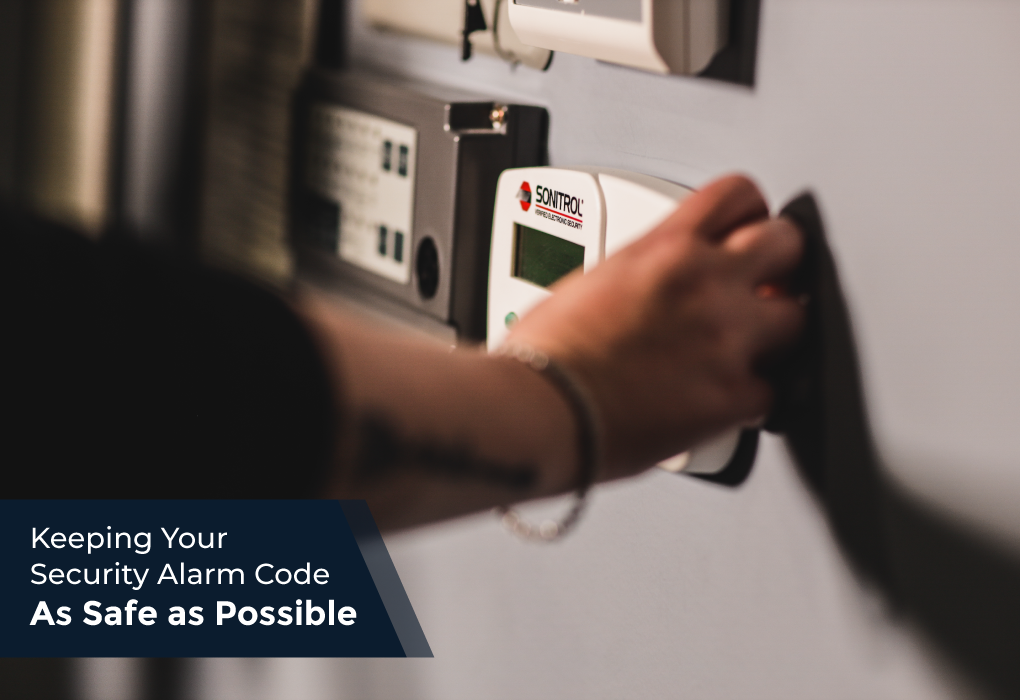How to Protect Your Security Alarm Code

Security is a primary concern for homeowners and business owners alike. One of the fundamental components of a robust security system is the alarm code. It’s the key to activating and deactivating your security system, which means it’s crucial to keep it protected.
Here are some important actions you can take now to keep your code secure.
Did You Know?
There are 10,000 different combinations possible using a 4-digit code. However, according to a study conducted by DataGenetics, there are 10 pins that are most commonly used.
- 1234
- 1111
- 0000
- 1212
- 7777
- 1004
- 2000
- 4444
- 2222
- 6969
Understanding the Importance of Alarm Code Security
Alarm codes are the keys to your security system. If compromised, they can render the most sophisticated systems ineffective. This is why it’s crucial to treat these codes with the highest level of security.
The Risks of a Compromised Alarm Code
- Unauthorized Access: The most apparent risk is unauthorized individuals gaining access to your property.
- Disabling Security Measures: Intruders can disarm systems, leaving your property vulnerable.
- Privacy Invasion: Compromised codes can lead to breaches of personal and sensitive information.
Best Practices for Creating Secure Alarm Codes
Avoiding Common Pitfalls
- Don’t Use Personal Information: Avoid birthdates, anniversaries, or other easily guessable numbers.
- Steer Clear of Sequential Numbers: Codes like “1234” or “0000” are easily guessable.
- Unique Codes for Different Systems: Don’t use the same code for multiple systems or sites.
Complexity is Key
- Mix of Characters: Use a combination of numbers, and if possible, letters and symbols.
- Randomness: The more random the code, the harder it is to guess.
Regularly Updating Your Alarm Codes
Schedule Regular Updates
- Routine Changes: Change your alarm codes at least every 3-6 months.
- Post-Service Changes: Change codes after any maintenance or service checks.
Keep Track Securely
- Secure Record-Keeping: Use a secure method, like a password manager, to keep track of changes.
Educating Family Members and Employees
Training and Awareness
- Confidentiality Training: Ensure that all individuals with access understand the importance of keeping codes confidential.
- Awareness Sessions: Regular sessions on security practices can reinforce the importance of code security.
Setting Boundaries
- Restricted Access: Limit code knowledge to only those who absolutely need it.
- Temporary Codes: For guests or temporary employees, use codes that can be easily changed or revoked.
Advanced Security Measures
Multi-Factor Authentication (MFA)
- Layered Security: Implement systems that require a code plus another form of verification, like a fingerprint or mobile app notification.
Alarm System Integration
- Smart Home Integration: Link your alarm system with other smart home devices for enhanced monitoring and control.
Responding to a Compromised Code
Immediate Action
- Immediate Reset: Change your code immediately if you suspect it has been compromised.
- System Check: Have your system checked by a professional to ensure no other breaches.
Reporting and Analysis
- Incident Report: Document any breach or attempted breach.
- Professional Assessment: A security expert can analyze the incident and suggest improvements.
Leveraging Technology for Enhanced Security
Smart Alarms and Notifications
- Real-Time Alerts: Modern systems can send alerts if an incorrect code is entered multiple times.
- Remote Monitoring: Some systems allow you to monitor and change codes remotely.
Regular Software Updates
- Stay Updated: Ensure your system’s software is always up to date to protect against vulnerabilities.
Your security alarm code is a critical line of defense in protecting your property and personal safety. By following these robust strategies – from creating complex codes to regular updates and leveraging technology – you can significantly enhance the security of your alarm system. Remember, security is not just about the systems you install; it’s also about the practices you follow. Stay vigilant, stay informed, and stay safe.
Kimberlite Sonitrol: Your Trusted Security Provider in Central and Northern California
Kimberlite Sonitrol stands out as Central and Northern California’s trusted security provider. With a focus on cutting-edge technology and customer-centric service, Kimberlite Sonitrol offers comprehensive security solutions, including fire alarm systems, monitored 24/7 for immediate response. Their expertise in integrating fire safety measures with overall security plans makes them a preferred choice for businesses prioritizing safety and peace of mind.
For more information about Soinitrol fire technologies, call us today at 1.888.Sonitrol.


Connect with Sonitrol-Kimberlite